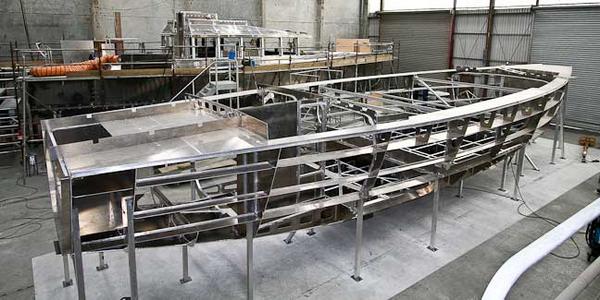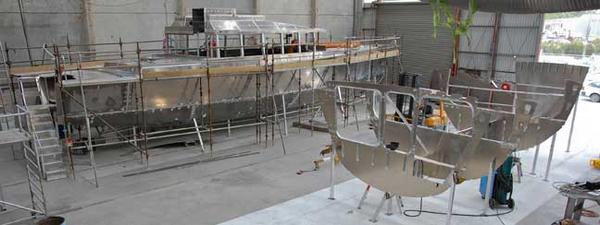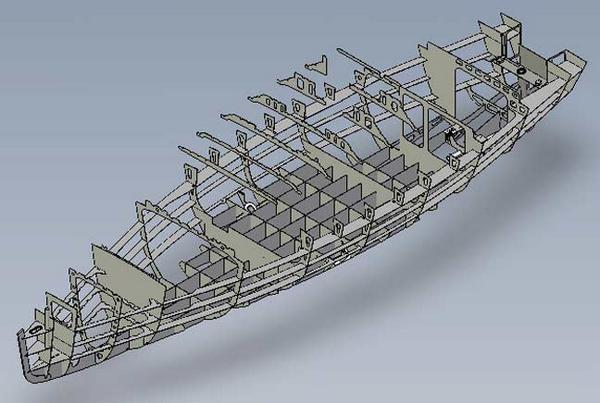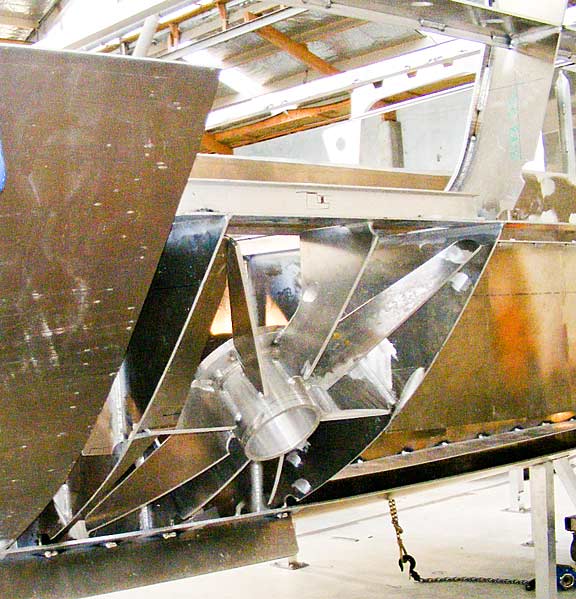
We’ve been so busy the last two months, catching up on design work for the FPB 64s in New Zealand and dealing with projects put on hold last spring, that we have only recently had time to reflect on the past year.

We’ve been so busy the last two months, catching up on design work for the FPB 64s in New Zealand and dealing with projects put on hold last spring, that we have only recently had time to reflect on the past year.

This summer we changed our prop zincs. When we noticed a diver in Kinsale, Ireland cleaning bottoms, we asked him to change ours. We had only had them five months and they could easily have gone the rest of the year, but since he was available we decided to change them anyway.

We are almost complete with the metal work on hull number one and hull number two is coming along well.
In this update we will start with a critical component to propulsion efficiency and propeller protection – the skeg.

Our apologies for being so late with this update. The many requirements of boat building has been keeping us busy. So, there are lots of photos to review (the newest of which is now three weeks old), starting with the one above. The house is now in situ on FPB64 #1 and construction of hull #2 has begun.

Wind Horse is exceptionally quiet under way. She is easier on the ears, in fact, than was Beowulf at the same average speed under sail. Still, in spite of a minuscule 57dB at cruising speed we have been slowly fine tuning the sound levels.

Since we have been showing you photos of how the FPB 64 is being built, we thought it might be helpful to have a look at how the pieces fit together on a macro basis. The 3D images above and following are based on the cut files for the FPB 64, from which the boat is actually built.
Spring is on its way to New Zealand after a stormy winter, and the first FPB 64 is on its way as well. The second hull is about to start (plate is being cut now). We have been remiss in updating the website, so this is a long, detailed report.

We’ll start with this photo of the bow just before it was closed off with the final topside plate. This shows the structure which supports the centerline girder in a collision, forming a watertight tank in the process. Note the vertical solid round bar from the middle horizontal web. This is the Sampson post which exits through deck and is used for towing and other high-load situations. The second bulkhead forms the aft end of the chain locker, and then you have the storage portion of the forepeak.

We have been told by folks that the British Met. Service tends to overforecast, and to take their gale warnings with a grain of salt. Not this time! When we left the Beaulieu River the day was chatted up to be brisk. About 1100 we heard a storm warning on VHF. A couple of hours, comfortably secure on the dock in Yarmouth we had a great view of the Solent over the seawall, as the forecast force 9/10 breeze came in.
We are often asked why we don’t build the FPBs in fiberglass. We like both fiberglass (properly done) and aluminum, and we have certainly done lots of both over the years. It is just a question of which is best suited to the cruising environment envisaged for this design. Here are a few details to show you why we prefer aluminum for the FPB 64.

This is the “boss” into which the stabilizer control structure will be installed. Note the heavy aluminum pipe and gussets, all contained within a watertight coffer dam. There is simply no way you can match the strength of this welded structure with secondary fiberglass bonds. For normal working loads over a brief life span, fiberglass is fine. But if you are going to do some rock hopping, dry the boat out on mud flats, and put many thousands of offshore miles on the boat, then we want this highly stressed area to be fabricated from welded aluminum.